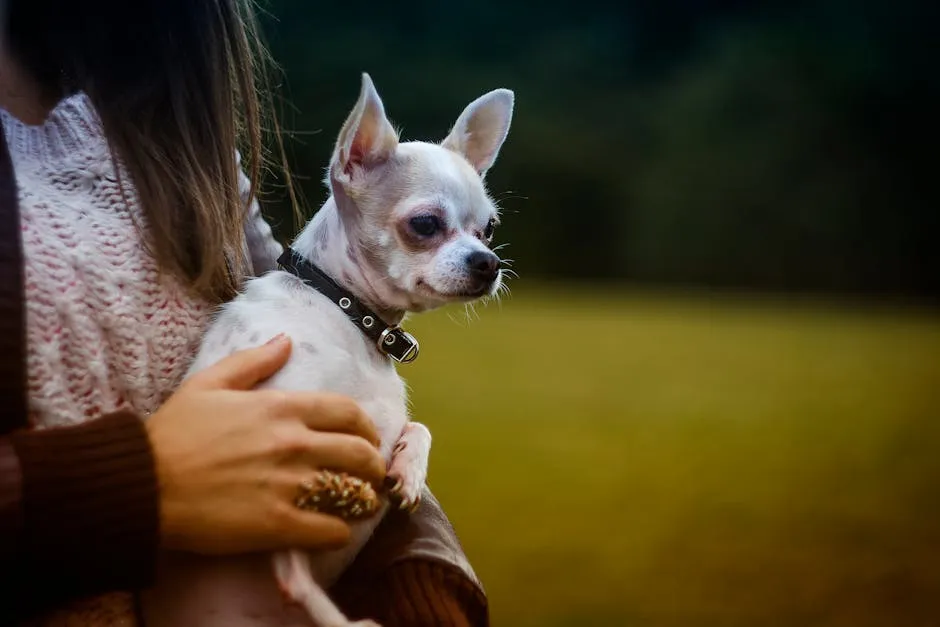Introduction
Have you ever noticed how different dog breeds can seem like different personalities? Each breed has its own quirks and characteristics that make it special. Understanding dog breeds is crucial for anyone thinking about bringing a furry friend home.
From tiny Pomeranians to giant Great Danes, the variety is astounding. This diversity not only adds to the joy of pet ownership but also helps us find a dog that fits our lifestyle. Knowing about various breeds aids potential owners in making an informed choice.
Speaking of informed choices, if you’re just starting out, consider investing in Dog Training 101: The Complete Guide to Training Your Dog. This comprehensive guide can help you navigate the often baffling world of dog behavior and training. Trust me, your future self (and your dog) will thank you!

Summary and Overview
So, what exactly makes a dog breed? A dog breed is a specific group of dogs that share common traits. These traits include physical appearance, behavior, and temperament.
Dog breeding has a rich history. It began with humans selectively breeding dogs for various tasks, like hunting, herding, and companionship. Today, there are over 340 recognized breeds worldwide, each tailored for specific roles.
Factors influencing a breed’s characteristics include size, temperament, and health. For example, larger breeds often require more space and exercise. Understanding these traits is vital for potential dog owners. This article aims to guide you in selecting the right breed for your lifestyle.
And if you’re looking for a great resource on all dog breeds, check out The Complete Dog Breed Book. This book is like the encyclopedia of dog breeds—perfect for the curious dog owner!

What is a Dog Breed?
A dog breed is defined as a group of dogs that “breeds true.” This means that if you breed a purebred Labrador with another purebred Labrador, their puppies will also be recognized as Labradors.
Breed standards are essential in the dog world. They describe the ideal traits, movement, and temperament of each breed. These standards are critical for breeders and judges at dog shows.
Organizations like the American Kennel Club (AKC) play a significant role in breed recognition. The AKC currently recognizes over 200 breeds, while the Fédération Cynologique Internationale (FCI) lists around 360. Understanding these organizations helps you navigate the vast dog breed landscape effectively.
Now, if you’re looking to pamper your pup, you might want to consider a PetFusion Ultimate Dog Bed. It’s like a cloud for your furry friend, ensuring they get the best sleep ever!

Categories of Dog Breeds
Dog breeds can be sorted into various categories. Each category highlights unique traits and purposes. Understanding these groups helps you choose the right dog for your needs. Let’s break down the main categories.
1. Working Group
Working dogs possess strength and intelligence. They are often bred for specific tasks. These tasks include guarding property, pulling sleds, and rescue operations. Their loyalty and protective instincts make them excellent companions.
Examples
Popular breeds in this group include the Siberian Husky, Doberman Pinscher, and Rottweiler. Each of these breeds exhibits remarkable skills and adaptability.

2. Herding Group
Herding dogs display strong instincts and intelligence. They are known for their ability to control the movement of livestock. Their quick thinking and agility are crucial for this role.
Examples
Notable breeds include the Border Collie and Australian Shepherd. Both are renowned for their herding abilities and are eager to work alongside their owners.

3. Hound Group
Hound breeds are celebrated for their hunting capabilities. They are skilled at scent tracking and pursuing game. Their keen sense of smell and stamina are impressive.
Examples
Famous hound breeds include the Beagle and Bloodhound. These dogs excel in hunting scenarios and have friendly dispositions.

4. Sporting Group
Sporting dogs are bred for hunting and retrieving. They are active and require regular exercise. Their friendly nature makes them great family pets.
Examples
The Labrador Retriever and Golden Retriever are prime examples. Both breeds are friendly, energetic, and eager to please.

5. Toy Group
Toy breeds are small and often serve as companion animals. Their size makes them suitable for various living situations. Many are affectionate and enjoy being close to their owners.
Examples
Popular toy breeds include the Pomeranian and Chihuahua. Both breeds are known for their vibrant personalities and loyalty.

6. Terrier Group
Terriers are energetic and tenacious. They were originally bred to hunt vermin. Their bold nature and intelligence are remarkable traits.
Examples
Common breeds include the Jack Russell Terrier and Airedale Terrier. These dogs are known for their spirited behavior and playful attitude.

7. Non-Sporting Group
This group includes a diverse range of breeds. Non-sporting dogs may not fit specific roles but are unique in their own right. Their traits vary widely, making them adaptable companions.
Examples
Breeds like the Bulldog and Shih Tzu represent this category. They each have distinct characteristics that endear them to families.

8. Utility Group
Utility breeds are developed for specialized tasks. These can include search and rescue, therapy, and more. Their versatility makes them valuable companions.
Examples
Examples include the Akita and Alaskan Malamute. Each breed excels in specific roles while being loving family pets.

Understanding these categories can guide you in selecting the perfect dog breed. Each group has distinct qualities that cater to different lifestyles and preferences. Speaking of preferences, if you’re looking for some fun for your dog, consider getting an Outward Hound Hide-A-Squirrel Puzzle Dog Toy. It’s a fantastic way to keep your pup mentally stimulated while having loads of fun!

Factors to Consider When Choosing a Dog Breed
Selecting the right dog breed involves evaluating several key traits. Consider these factors to find your perfect match.
Size
It’s important to match the breed size to your living space. Smaller breeds often adapt well to apartments. Larger breeds may need more room to roam. For more information on choosing the right size for your dog, check out this guide on choosing the right dog bed for different breeds and sizes.
Choosing the right size for your dog is essential for their comfort and well-being. Learn more about it here.

Energy Level
Different breeds have varying activity needs. High-energy dogs may require daily exercise. Ensure your lifestyle can accommodate their activity levels.
Temperament
Understanding a breed’s personality is essential. Some breeds are friendly and outgoing, while others may be more reserved. Choose one that fits your family’s dynamics.
Grooming Needs
Grooming requirements can differ greatly between breeds. Some may need regular brushing or professional grooming. Be prepared for the maintenance your chosen breed requires. For those shedding fur like a fluffy snowstorm, the Furminator Undercoat Deshedding Tool is a lifesaver!

Popular Dog Breeds Around the World
When it comes to popular dog breeds, certain ones stand out for their unique traits. Let’s take a closer look at some of these beloved breeds.
Labrador Retriever
Labrador Retrievers are known for their friendly and adaptable nature. They make excellent family pets and are eager to please. Their playful demeanor makes them a joy to be around.
German Shepherd
German Shepherds are loyal and protective companions. They excel in various roles, including service and police work. Their intelligence and courage make them highly sought after.
Golden Retriever
Golden Retrievers are intelligent and friendly dogs. They are great with children and enjoy being part of family activities. Their gentle disposition makes them perfect therapy dogs.
Pug
Pugs are playful and affectionate little companions. Their charming personalities win over many hearts. They love to cuddle and thrive on human interaction, making them perfect lap dogs.
In case your pug needs a little extra fun, consider a KONG Classic Dog Toy. It’s a fantastic boredom buster that can keep them entertained for hours!

Health Considerations for Different Breeds
Every dog breed comes with its own set of health considerations. Being aware of these can help you make informed choices.
Statistics
Different breeds have varying lifespans. For example, larger breeds often have shorter lifespans. Common genetic conditions can also vary by breed, such as hip dysplasia in German Shepherds or breathing issues in Pugs. Understanding these health factors is crucial for potential owners. It ensures a happy and healthy life for your furry friend. For a deeper understanding of hip dysplasia, refer to our post on Understanding and managing canine hip dysplasia.
Being informed about health issues in dog breeds is essential for responsible ownership. Learn more about hip dysplasia here.
Additionally, having a Dog First Aid Kit on hand is a smart move for any dog owner. You never know when you might need it!
Conclusion
Understanding dog breeds is vital for potential owners. Each breed has unique characteristics that influence behavior and care needs. Choosing the right breed can shape your life together.
Consider your lifestyle, activity level, and preferences when selecting a breed. A busy family may thrive with a playful and energetic dog. If you prefer a quieter companion, look for calmer breeds.
It’s wise to conduct thorough research on specific breeds. This ensures you choose a dog that matches your lifestyle. Check breed profiles and talk to breeders or shelters for insights.
And if you want to ensure your dog stays safe while enjoying water, don’t forget to grab a Dog Life Jacket for Water Safety. Because safety first, right?
A well-informed choice leads to a joyful companionship. Your perfect furry friend is out there, waiting for you!
FAQs
What is the most popular dog breed?
The Labrador Retriever tops the charts in many regions. Other favorites include Golden Retrievers and German Shepherds, loved for their friendly nature and loyalty.
How do I choose the right dog breed for my family?
Consider temperament, size, and activity level. Family-friendly breeds include Labrador Retrievers and Beagles, known for their loving nature.
Are mixed breed dogs better than purebred dogs?
Mixed breeds can be more adaptable and healthier. Purebreds may have specific qualities but can face genetic issues. Each has its pros and cons.
What are the best dog breeds for apartments?
Breeds like French Bulldogs, Pugs, and Dachshunds thrive in smaller spaces. They typically require less exercise and adapt well to apartment living.
How often should I groom my dog based on its breed?
Long-haired breeds may need grooming several times a week, while short-haired breeds might require less frequent grooming. Regular brushing is key for all.
How many dog breeds are there worldwide?
There are over 340 recognized dog breeds globally. The American Kennel Club (AKC) recognizes around 200, while the Fédération Cynologique Internationale (FCI) lists about 360.
Which dog breeds are considered hypoallergenic?
Breeds like Poodles, Bichon Frises, and Schnauzers are known for producing fewer allergens. They can be better choices for allergy sufferers.
Please let us know what you think about our content by leaving a comment down below!
Thank you for reading till here 🙂
All images from Pexels





